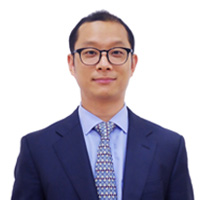Ruling party rekindles administrative capital drive
By Choi He-sukPublished : July 21, 2020 - 16:50

The ruling Democratic Party of Korea is reengaging the drive to establish an administrative capital, as it seeks a breakthrough in real estate issues.
The issue, which was put to rest in 2004, was revived following Democratic Party Floor Leader Rep. Kim Tae-nyeon’s address to the parliament on Monday. In 2004, the Constitutional Court ruled that the plans were unconstitutional, saying that Seoul being Korea’s capital is an established fact under “customary constitution.”
In Monday’s speech, Kim said that Cheong Wa Dae, the National Assembly and government ministries remaining in Seoul should be relocated to Sejong, if overpopulation and high real estate prices in Seoul and surrounding areas are to be resolved.
On Tuesday, Kim again raised the issue and proposed establishing a special parliamentary committee to handle the issue.
“(I) formally propose to the political arena and civic society to establish a special committee for completion of the administrative capital within the National Assembly,” Kim said at a party meeting Tuesday. He also called on the main opposition United Future Party to respond to the proposal, and urged the opposition party to make its position on the matter clear.
Kim also said that the 2004 Constitutional Court ruling could be changed, saying the country and public opinion have changed since 2004. “Completing the administrative capital is possible through a legislative decision (made) according to an agreement between the ruling and opposition blocs,” Kim said, adding that the Constitutional Court could take a different view on the matter in line with “changes in the people’s sensibilities.”
Ruling party heavyweights are getting behind the drive.
Kim Boo-kyeom, a former lawmaker running for the Democratic Party chairmanship, on Tuesday said that the renewed drive is reviving late President Roh Moo-hyun’s “philosophy of balanced development.”
National Assembly Speaker Rep. Park Byeong-seug has also supported the idea, saying that the National Assembly moving to Sejong would “lead balanced national development,” while Rep. Lee Nak-yon took a more cautious approach saying that the matter could be pushed forward if rival parties agree, or by again taking the matter to the Constitutional Court.
The ruling party rekindling the issue appears to be an attempt at seeking a breakthrough in the Moon administration’s real estate policies, which have drawn heavy fire for their lack of efficacy.
Despite the government rolling out real estate policy packages on four occasions, with numerous minor adjustments in between, property prices in Seoul and surrounding regions have spiked since Moon took office in 2017.
According to data compiled by Real Estate 114, a local real estate portal, the average price of apartments in Seoul per square meter has seen more than a 1.5-fold increase since Moon took office.
The data shows that in May 2017, Seoul apartments’ average price per square meter stood at 5.96 million won ($4,980), and that has since risen to 9.21 million won as of this month.
According to data compiled by the nongovernmental Citizens’ Coalition for Economic Justice, the spike is much more pronounced when looking at specific complexes in Seoul.
The group looked at average prices of 82.5-square-meter apartments in 34 large complexes in Seoul between 1993 until May 2020.
Of the 34 complexes the group analyzed, 16 are located in the sought-after areas of Gangnam-gu, Gangdong-gu, Seocho-gu and Songpa-gu.
According to the group’s analysis, the price of 82.5-square-meter properties in the complexes rose 450 million won during the Moon administration, recording the highest increase among the six administrations that have held power during the period.
The group’s analysis also showed that the difference between the average prices of properties in the four cited districts and those in other areas have undergone a 100-fold increase. According to the figures, the difference between the four districts’ and other properties’ prices stood at 9.21 million won in 1993, and rose to over 923 million in 2020.
By Choi He-suk (cheesuk@heraldcorp.com)







![[Today’s K-pop] Blackpink’s Jennie, Lisa invited to Coachella as solo acts](http://res.heraldm.com/phpwas/restmb_idxmake.php?idx=644&simg=/content/image/2024/11/21/20241121050099_0.jpg&u=20241121172748)










![[Today’s K-pop] Babymonster logs 100m views with ‘Drip’ music video](http://res.heraldm.com/phpwas/restmb_idxmake.php?idx=642&simg=/content/image/2024/11/22/20241122050051_0.jpg&u=20241122172213)